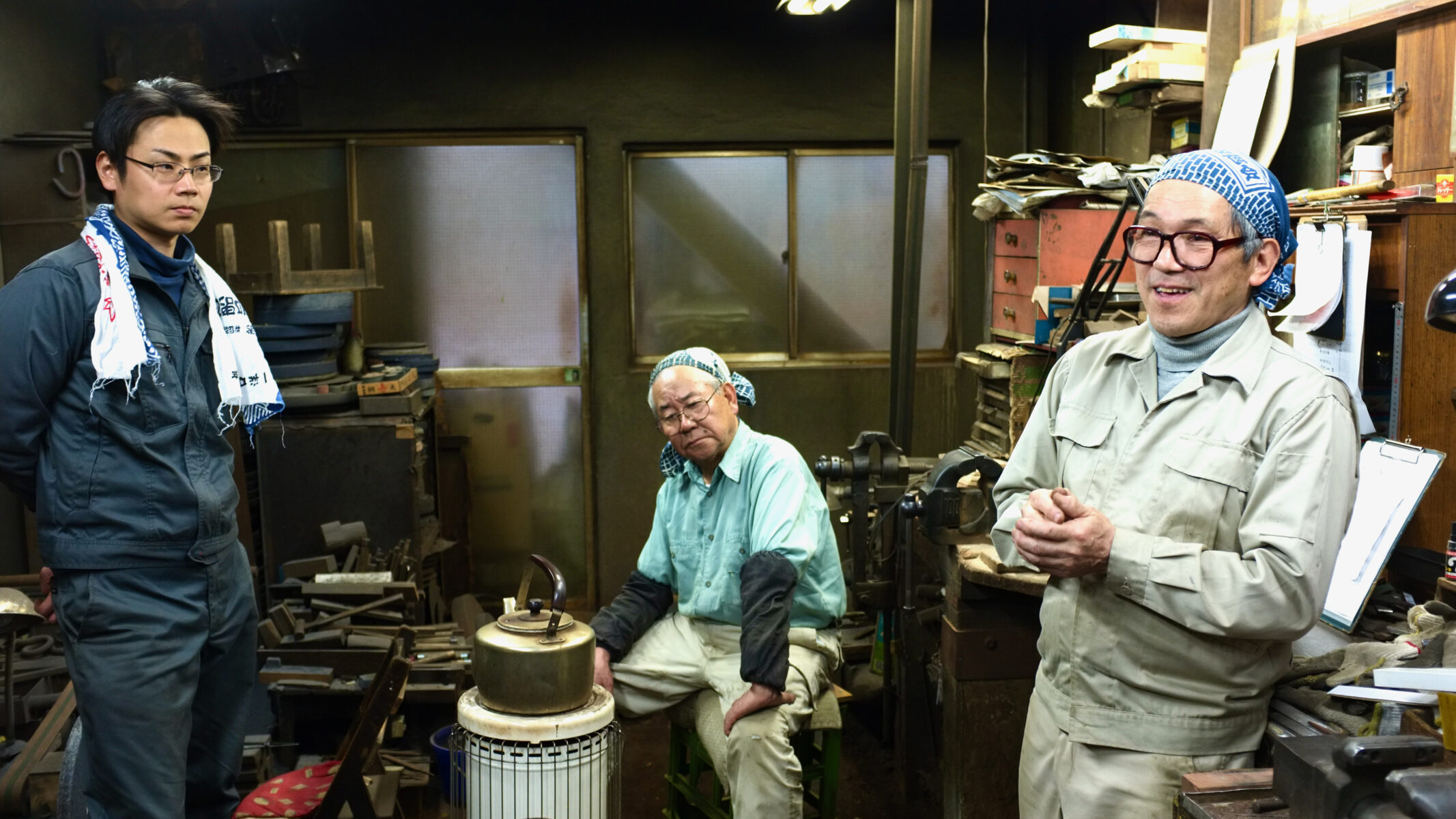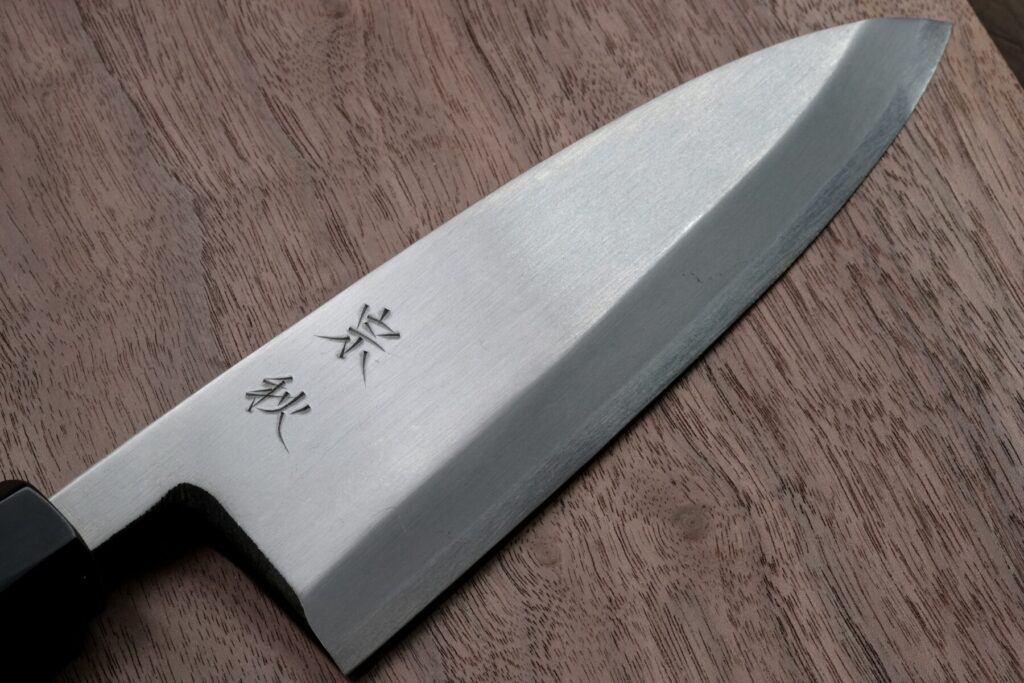Introduction
Tucked away in the alleys of Katsushika Ward in Tokyo, you’ll find Yaegashi Uchihamono Seisakusho, one of Japan’s few remaining authentic blacksmith workshops. They diligently carry on the tradition of Edo-period craftsmanship, employing ancient techniques to create exquisite Japanese knives and other blades.
At the helm of Yaegashi Uchihamono Seisakusho is the 4th generation master, Yaegashi Muneaki. With a passion ignited in his youth, Munaki has devoted his life to upholding the revered art of uchihamono—the intricate process of forging blades. Born in 1952, he took his place in the family business at 20, immersing himself in the age-old traditions passed down through generations.
Drawing upon the ancestral wisdom and ancient techniques of his forefathers, Muneaki stands as a guardian of the uchihamono craft, preserving the artistry and secrets of this unique Japanese tradition. With unwavering dedication, he meticulously safeguards the knowledge of iron bonding. This closely held secret ensures these remarkable blades’ exceptional quality and durability.
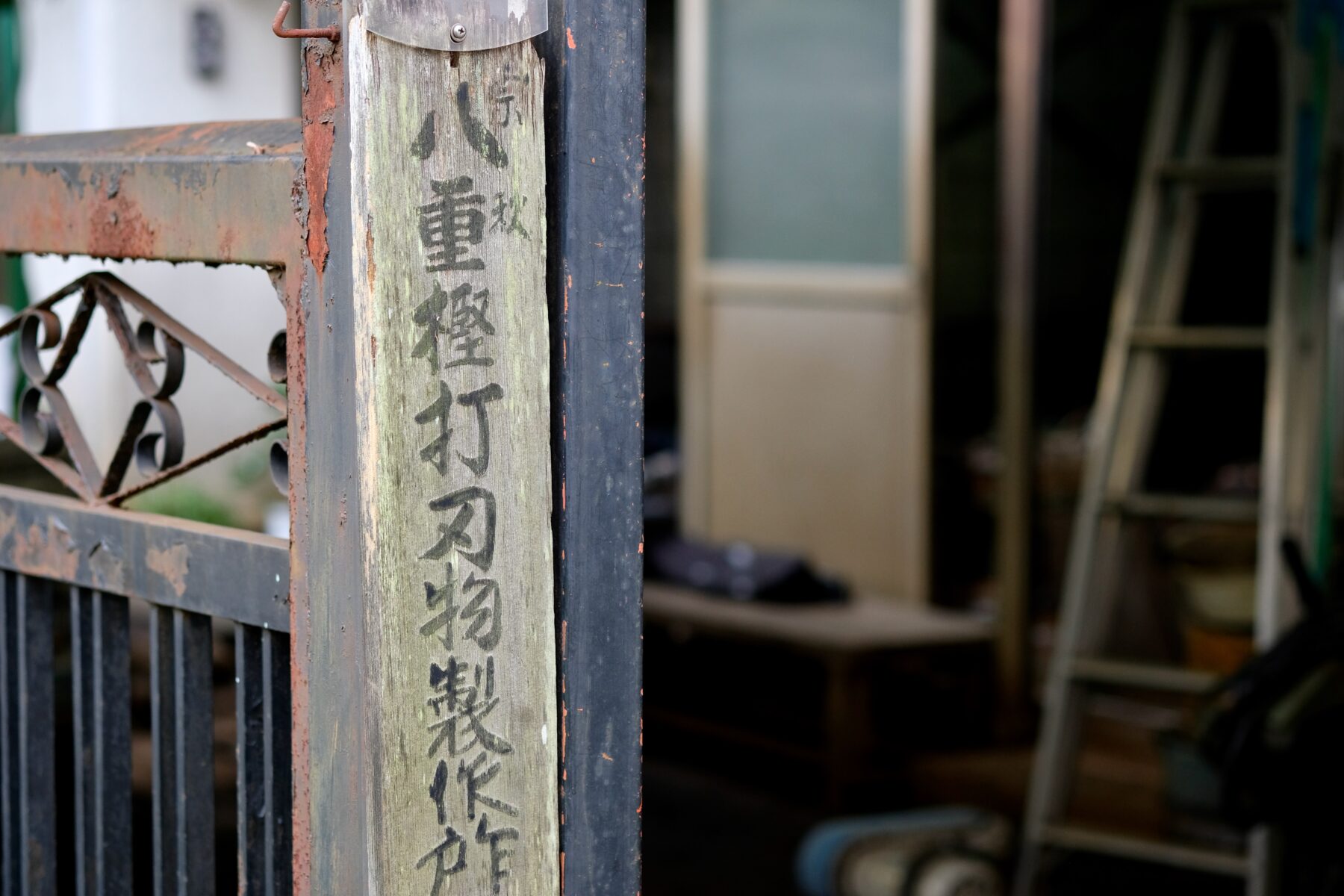
Preserving Tradition: The Legacy of Yaegashi Uchihamono Seisakusho's Handcrafted Knives
The founder of the workshop, the first generation, learned the art of swordsmithing from Shigemori, a master swordsmith in Nanbu (present-day Iwate Prefecture), during the late Edo period. He established himself as a swordsmith named “Muneaki.” His son, the second-generation Muneaki, moved to Tokyo in 1912, where he expanded his craft to include the production of traditional Japanese blades such as kitchen knives, chisels, and planes. In 1928, the workshop relocated to its current address in Katsushika Ward, where it stands today.
What sets Yaegashi Uchihamono Seisakusho apart is its commitment to entirely handmade craftsmanship without machinery. The workshop holds onto the aesthetic of traditional Edo-period production methods in a world dominated by mass-produced knives.
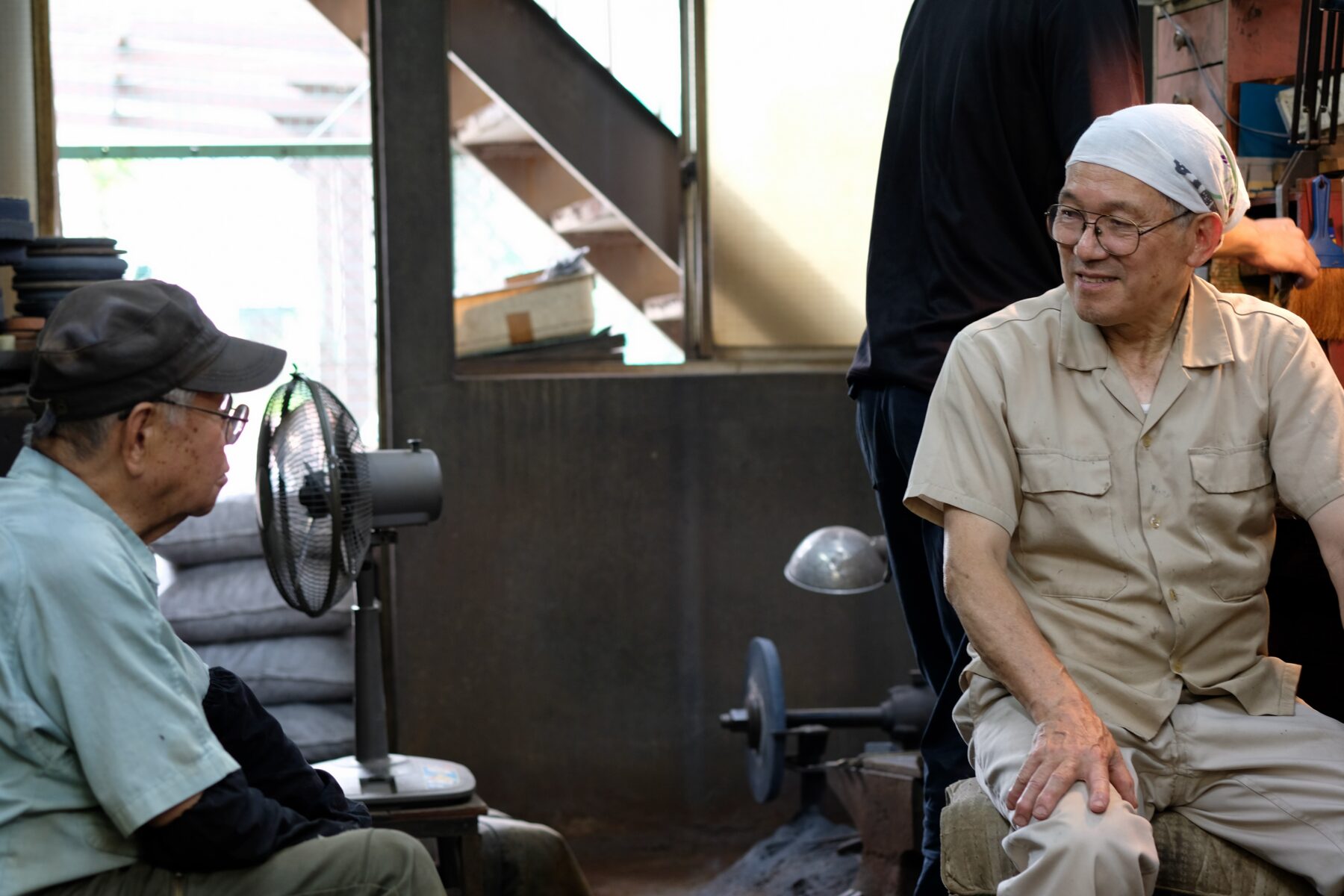
The Art of Bladesmithing
Japanese knives, known as “Wa-bocho,” come in various types based on their manufacturing methods. The most common manufacturing method is the “Nukihamono” method, which utilizes a relatively new technique. This method involves using a press machine to punch out the shape of the knife from a sheet of material, followed by heat treatment and grinding, all done primarily by machines. Like cutting out cookie shapes from dough using a cookie cutter, the press machine molds the knife shape using a metal mold. This manufacturing process is suitable for mass production. It gained momentum by establishing stainless steel manufacturing techniques in the latter half of the Showa era, producing rust-resistant, easy-to-handle, and affordable knives in the market.
In contrast, the traditional technique of “Uchihamono” employs the methods used to produce Japanese swords. While Nukihamono involves punching out the shape, Uchihamono involves forging two pieces of metal to shape the knife, such as forging a blade while striking two pieces of iron together. Blades generated using traditional techniques have high hardness and exceptional sharpness that lasts long.
In Uchihamono, the key is to combine the strength and flexibility of the blade by adhering to two types of metal: the hard “hagane” (steel) and the soft “jigane” (soft iron). The process involves layering the hagane onto the heated jigane and repeatedly forging them in a furnace at around 1000°C. The kitchen knife’s original form is shaped through multiple cycles of heating and hammering. Hammering densifies the metal’s internal structure, enhancing its strength and resilience, resulting in superior sharpness, durability, and exquisite beauty.
While machinery is prevalent in the modern production of Uchihamono, Yaegashi Uchihamono Seisakusho tenaciously preserves the traditional hand-forging techniques passed down since the Edo period. With a heavy hammer swung using their entire body, they repeatedly strike and shape the knife, embodying the essence of handmade craftsmanship. Such blacksmiths are becoming increasingly rare throughout Japan, making Yaegashi Uchihamono Seisakusho a precious find.
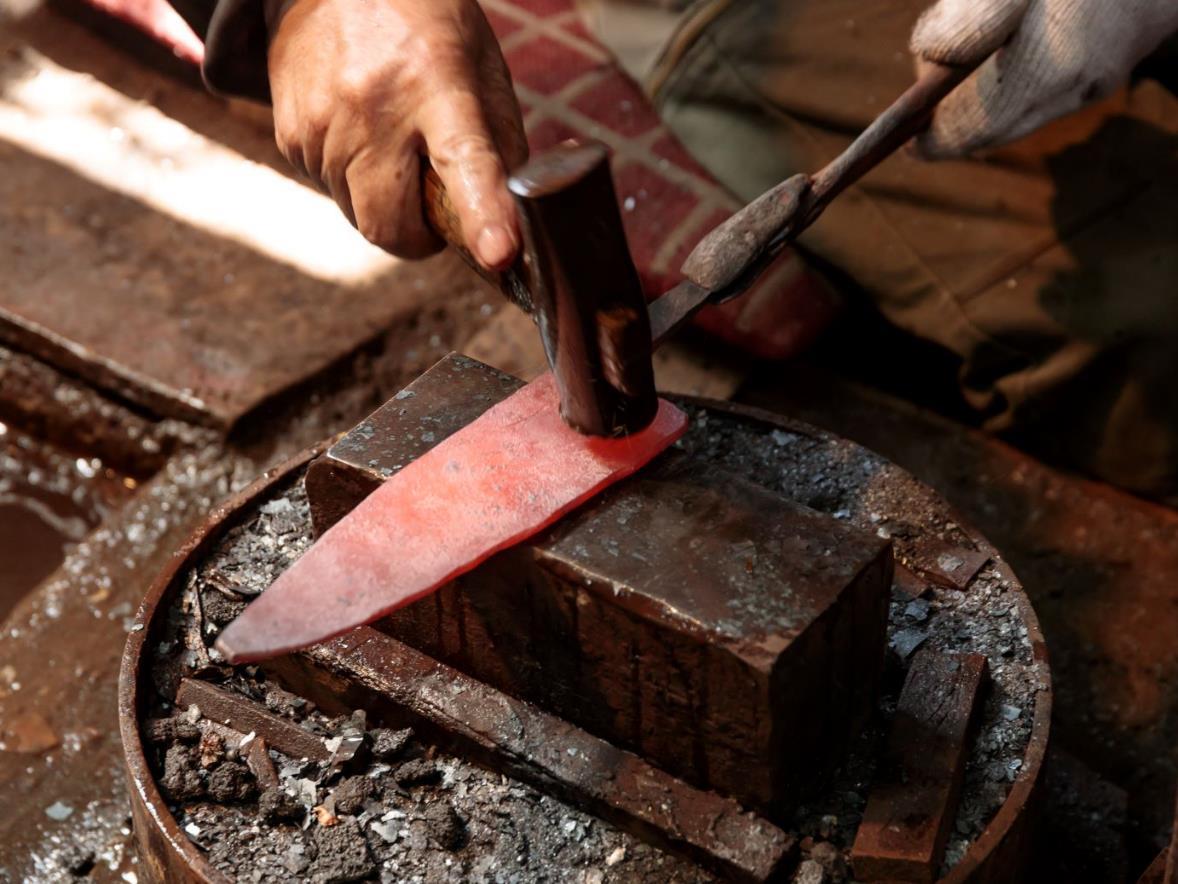
History of Japanese Blades and Kitchen Knives
According to the “Nihon Shoki” (The Chronicles of Japan), blacksmithing began in Japan in the year 583 when a Korean blacksmith was invited from Silla (present-day Korea) during the reign of Emperor Bidatsu (30th Emperor, 572-585) to learn the steel-making technique. As the samurai class rose to prominence, skilled swordsmiths emerged, honing their techniques. Using a method called “Chakkouho (steel deposition method),” they combined a soft iron body with a hard steel edge, giving birth to uniquely Japanese blades that were tenacious and sharp. Many renowned swords were created during the late Heian period and onward as the influence of the samurai grew.
The kitchen knives we see today, such as the Deba, Yanagiba, and Nakiri, have their roots in the late Edo period. As the Edo period brought stability, it led to declining demand for swords. On the other hand, cultural development, especially various culinary cultures, flourished, leading to specialized cooks called “Hocho-shi” for cutting meat and “Kizami-sakanashi” for cutting vegetables. Different types of knives were developed to cater to specific ingredients and cooking techniques, resulting in the variety of Japanese kitchen knives we have today.
As the Edo Shogunate collapsed and the Meiji era began in 1871, the government implemented a law banning the possession of swords. Consequently, most swordsmiths were compelled to switch their trade to producing knives and other blades for commercial and domestic use, including manufacturing Western-style knives introduced during the Westernization movement.
During the Meiji era, Western cooking methods demanded Western-style knives. In particular, since the consumption of beef was not prevalent in Japan, knives specifically designed for butchering beef became commonly known as “Gyuto Hocho” or “Gyutou,” meaning “beef knife” in Japanese.
In the Showa era, a fusion of the Gyuto Hocho and Nakiri Hocho resulted in the development of the “Bunka Hocho” or “Bunkabocho,” which had a diagonally curved tip. Subsequently, the rounded-tip version called the “Santoku Hocho” became popular and widely used in households.
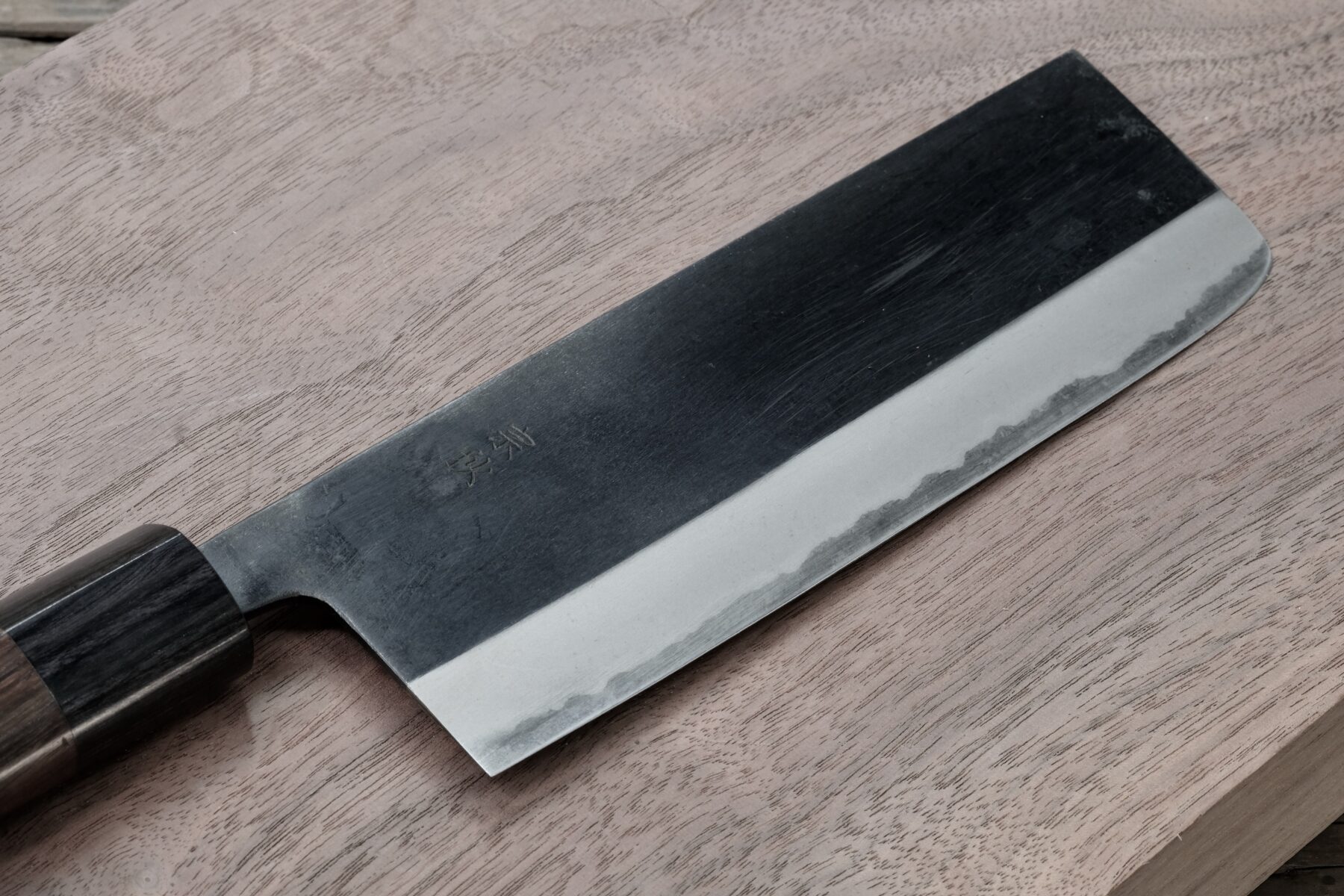
The Process of Uchihamono Knife Making
"Wakashi-yaki" (Heating)
The steel is heated until it turns red. This process is called “Wakashi,” or heating. The soft iron base (jigane) is heated to around 900°C and layered with special glue. By hammering the heated jigane and the layered steel (hagane) together, a base plate for the knife is formed.
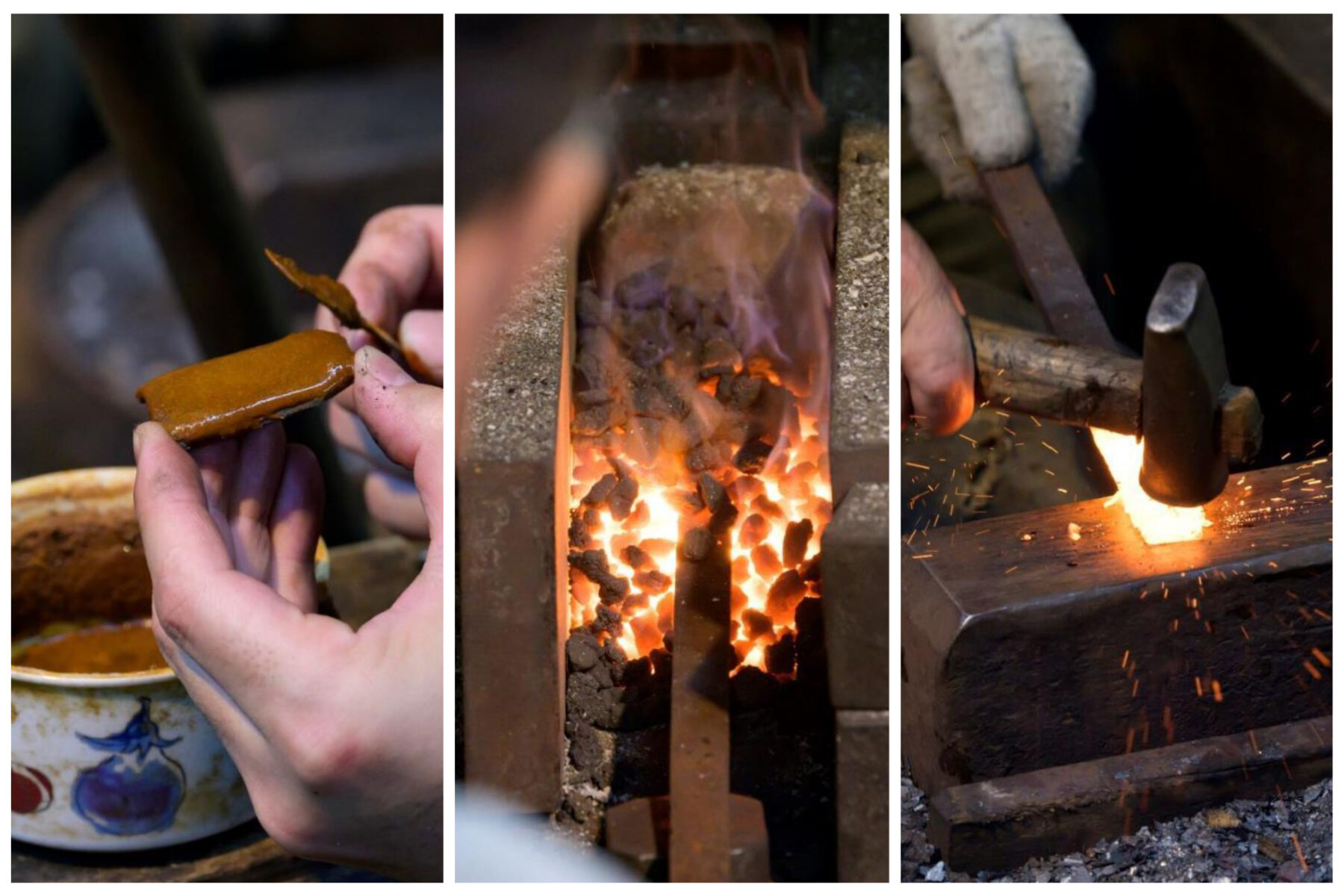
"Hi-tsukuri" (Shaping)
The base plate is reheated in the furnace, reaching temperatures of 600-700°C. Two craftsmen, the “Yokoza,” who holds the hammer and gives instructions, and the “Sente,” who follows the instructions and strikes with a large hammer, work together to forge the knife. They hammer the plate to thin it out, shape the knife while integrating the soft iron and steel, and remove unnecessary parts to refine its form. Once the knife is shaped like a kitchen knife, it is heated again in the furnace to insert the tang (nakago) portion into the handle.
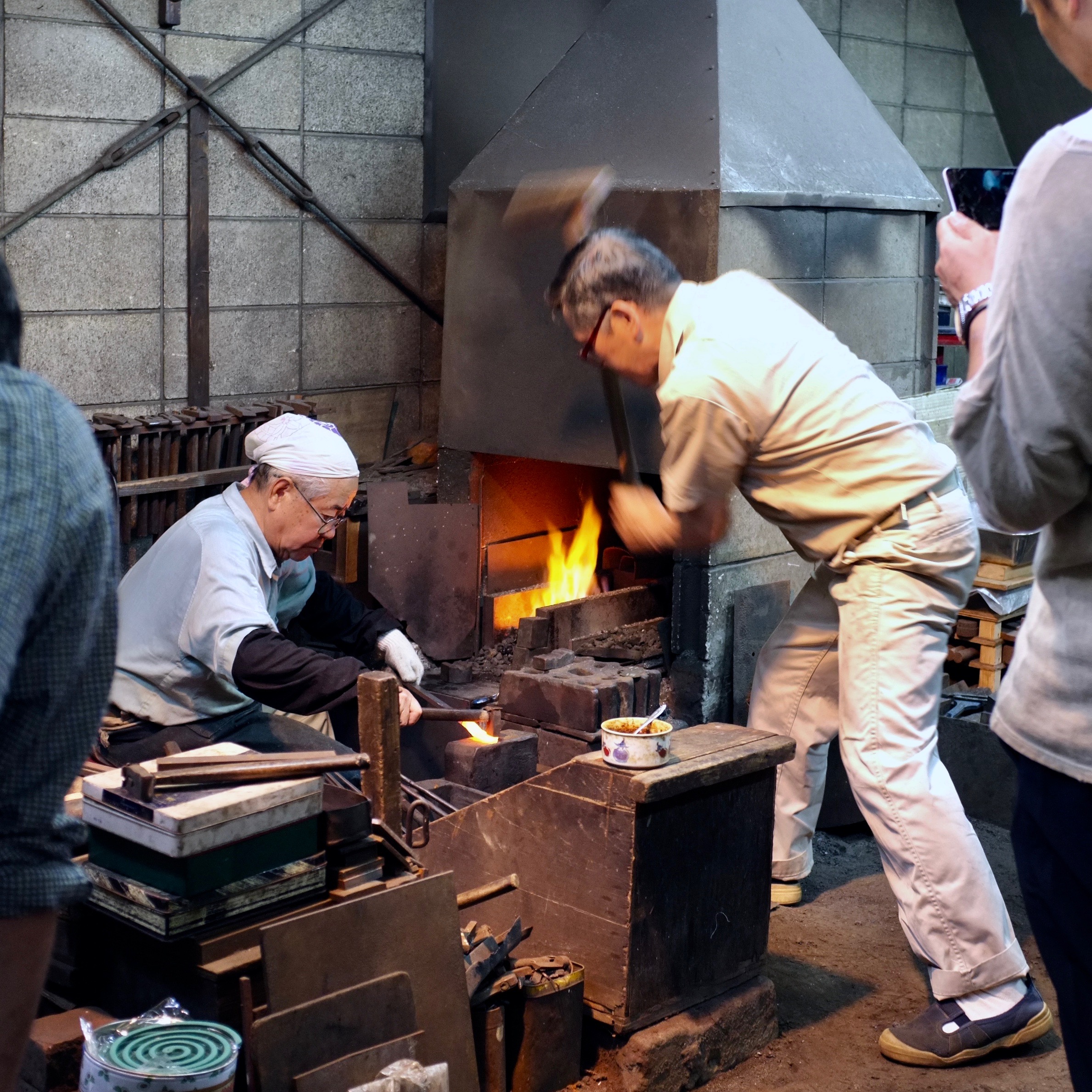
"Namashi" (Annealing)
The shaped knife is placed in ash to cool naturally. This process gradually cools the blade and removes internal stress.
"Narashi" (Adjusting)
The knife is heated and hammered on its surface to flatten any hammer marks and burrs. This rough pounding removes unnecessary impurities and refines the thickness of the blade, ensuring uniformity.
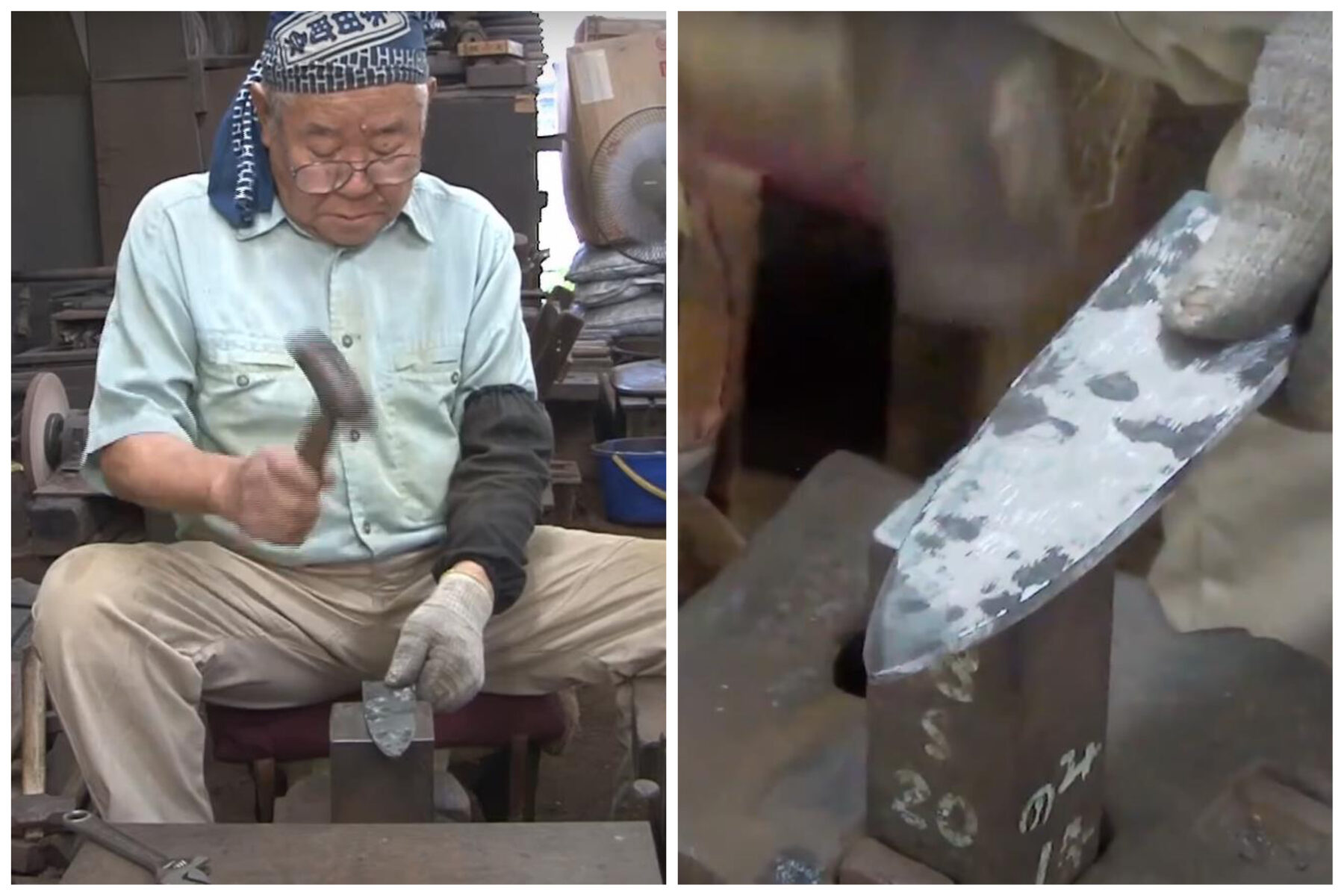
"Seikei" (Finishing)
The excess parts of the knife are cut off according to the desired shape.
"Yaki-ire" (Quenching and Tempering)
The knife is heated once again and then rapidly cooled by immersion in water. This process enhances the hardness and sharpness of the steel (hagane). After quenching, the knife is reheated to a temperature of 180-200°C to refine the steel, giving it resilience and resistance to chipping. Both stages require precise temperature control, and skilled artisans determine the optimal timing by observing the color of the flames. The steel transforms, becoming harder when rapidly cooled.
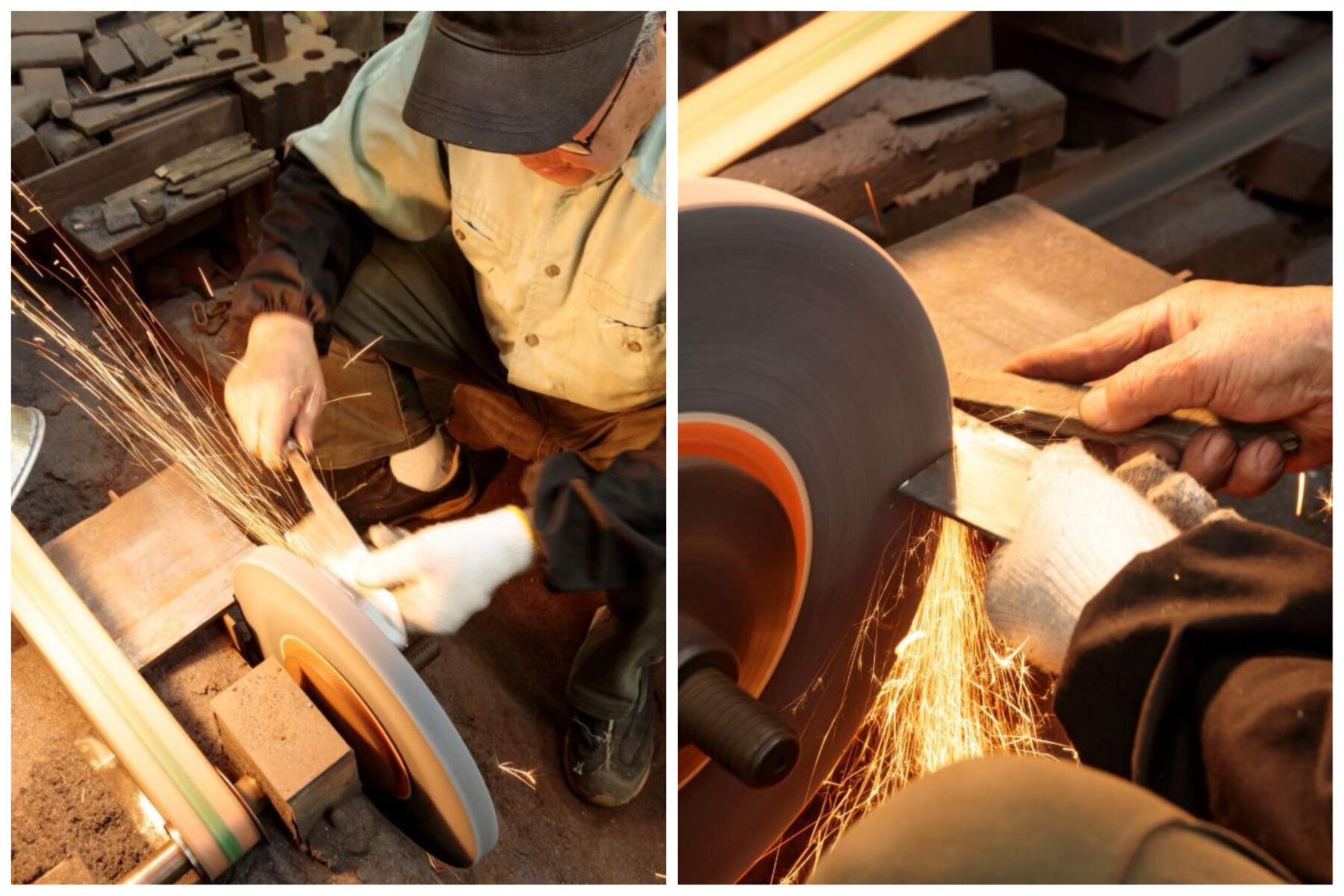
"Ha-zuke" (Edge Sharpening)
The knife’s blade is honed to a razor-sharp edge through sharpening and polishing. This stage is known as “ha-zuke” or edge sharpening. It is a critical step in transforming the knife into a superior cutting tool. The blade is initially roughly sharpened using a coarse grindstone to thin out its edge and refine its shape. This step determines the knife’s important edge angle and requires frequent checks to ensure the blade remains straight. The process continues by further sharpening the flat side, refining the cutting edge through “hon-zuke,” or main sharpening, and thinning the back side through “ura-zuke,” or back sharpening. Lastly, a fine-grain grindstone gives the blade its final polish. After applying rust-preventing oil, the handle is attached.
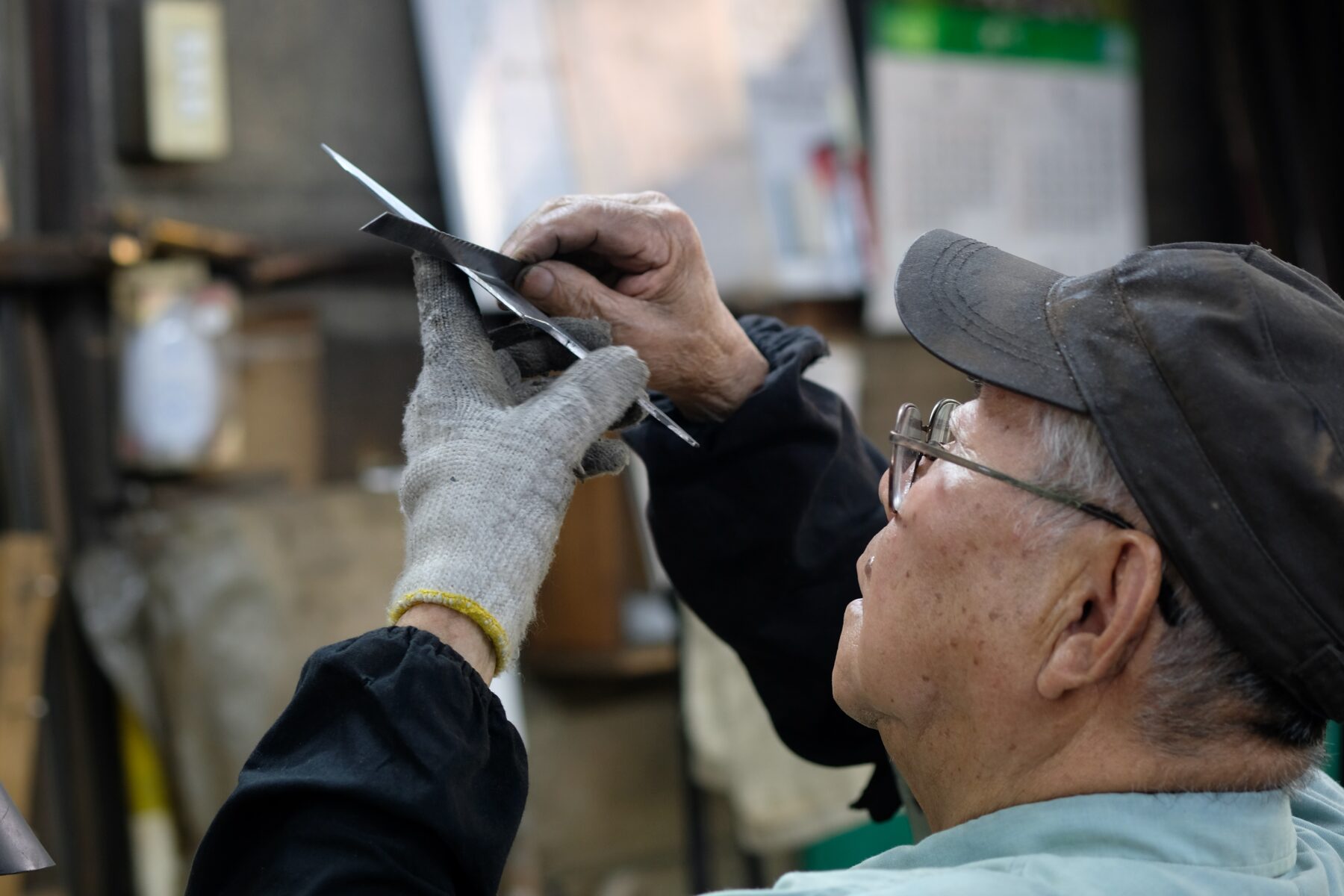
Inscription and Completion
Finally, the master inscribes Yaegashi’s signature onto the blade using a hammer and chisel. With that, the knife is complete, embodying the artistry and dedication of Yaegashi Uchihamono Seisakusho.
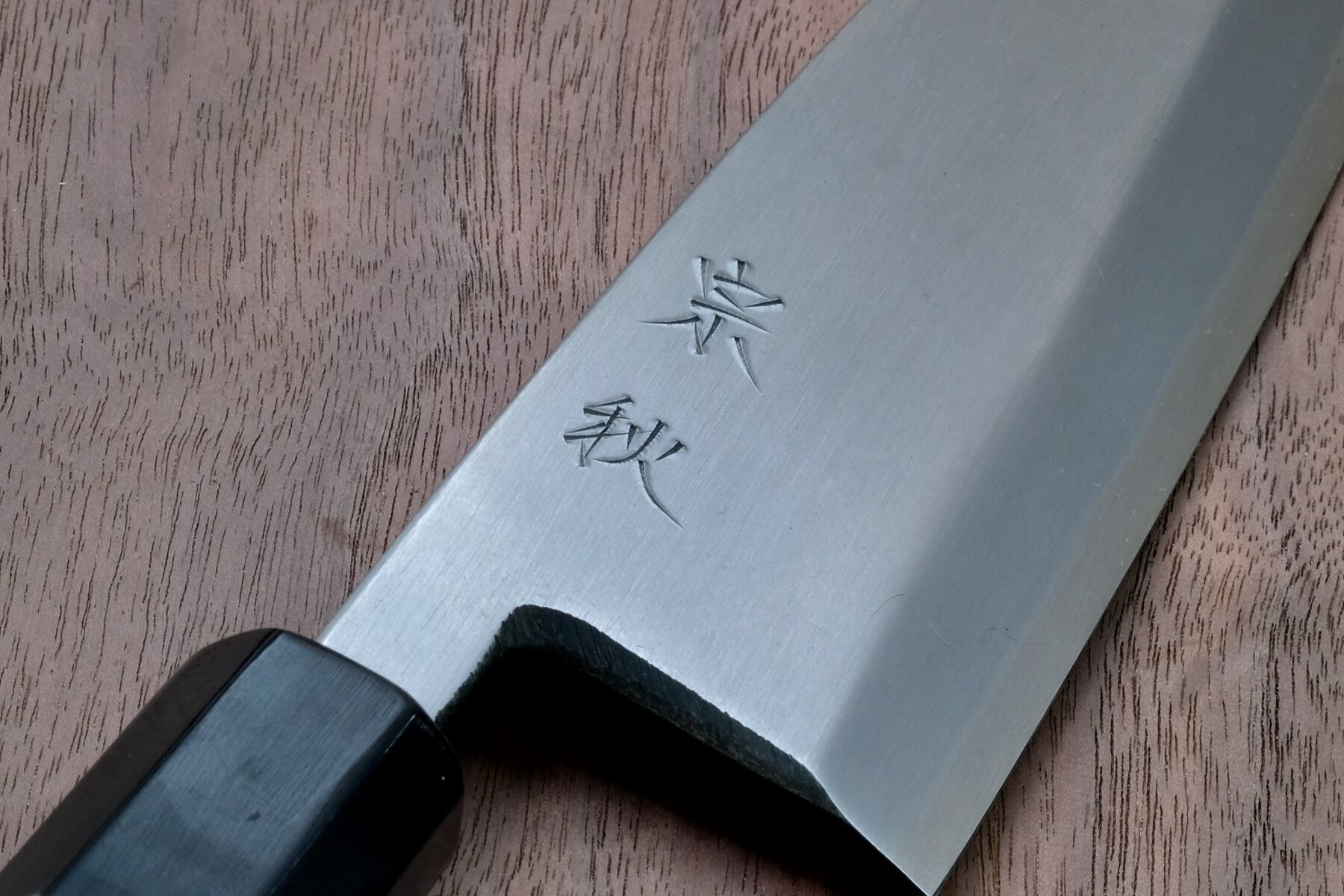
Embrace the Authenticity
The allure of Yaegashi Uchihamono Seisakusho’s knives lies in their use of Yasuki Hagane (white paper steel). This steel is renowned for its exceptional sharpness. Achieving razor-like cutting performance requires increased hardness, which typically makes the sharpening process more difficult. However, the low impurity content and additives in white paper steel make it easier to sharpen using grindstones. Every step of forging, annealing, quenching, and tempering is meticulously performed to create blades with outstanding cutting performance and ease of sharpening.
Yaegashi Uchihamono Seisakusho’s dedication to preserving traditional Japanese knife-making techniques ensures that each knife produced is a testament to Japan’s artistry, craftsmanship, and cultural heritage. With their commitment to handmade excellence, they continue to uphold the legacy of Japanese blades, providing enthusiasts of high-end Japanese knives with exceptional tools that embody the spirit of traditional craftsmanship.
Whether you’re a professional chef, a passionate home cook, or an avid collector, investing in a Yaegashi Uchihamono Seisakusho knife means owning a piece of Japanese history and craftsmanship. This true masterpiece will serve you faithfully in your culinary endeavors for generations.
